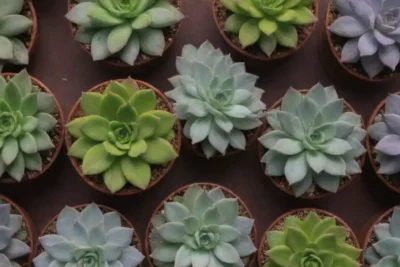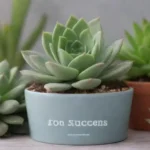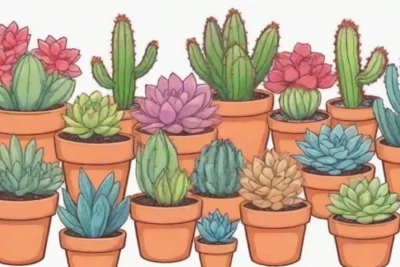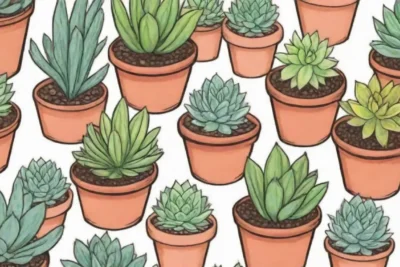
The Science Behind Succulent Adaptations to Extreme Temperatures

Introduction
Succulents are fascinating plants that have captured the interest of botanists, gardeners, and nature lovers alike. Traditionally associated with arid deserts and extreme climates, these resilient plants exhibit unique features that enable them to thrive in extreme temperatures. The ecological role of succulents is crucial as they provide food, habitat, and moisture retention in harsh environments, all while showcasing stunning forms and colors.
This article delves deep into the science behind succulent adaptations to extreme temperatures. From understanding their physiological mechanisms to exploring the variety of morphological traits, we will uncover how these remarkable plants survive and flourish despite the odds. We aim to shed light on why succulents are not just hardy survivors but also essential components of their ecosystems.
The Physiology of Succulents
Succulents have developed specialized physiological traits that enable them to conserve water and maintain cellular integrity under extreme temperatures. One of the primary adaptations of these plants is their unique photosynthetic pathways, specifically CAM (Crassulacean Acid Metabolism). This adaptation allows succulents to open their stomata at night rather than during the day. As a result, they can absorb carbon dioxide when temperatures are cooler and during periods of higher humidity. This method reduces water loss significantly and is particularly useful in hot, dry climates.
Moreover, succulents possess thick, fleshy leaves or stems that store water. When the surrounding environment is dry and temperatures peak, these reservoirs can be tapped into, providing hydration to the plant for photosynthesis and other metabolic processes. For instance, in species like the Aloe vera, the leaves are not only thick but also contain a gel-like substance that further helps to retain moisture, showcasing a dual purpose of water storage and protection against temperature extremes.
Another vital physiological adaptation is the presence of a waxy cuticle covering the plant surfaces. This outer protective layer reduces transpiration, or the loss of water through the leaf surface. This is particularly advantageous during extreme heat, as it minimizes the risk of dehydration. Some succulents even display a glaucous coating—a bluish-white powdery substance that reflects sunlight, further aiding in temperature regulation and reducing the risk of leaf scorching.
Morphological Adaptations
Morphological adaptations in succulents encompass various structural features that enhance their ability to withstand harsh environmental conditions. One significant characteristic is their leaf shape and texture. Many succulent species possess leaves that are thick and fleshy, reducing their surface area and minimizing water loss. In stark contrast to typical plants with broad, flat leaves, succulents often have a cylindrical or leathery leaf structure.
Additionally, certain succulent plants exhibit developmental changes based on their habitat. For example, succulents growing in areas with extreme sunlight may have thicker leaves and greater water storage capacity compared to those in more shaded environments. The artistry of nature is evident in plants such as the Echeveria, which has rosettes of flattened, concentric leaves that trap moisture and create a more humid microclimate around the plant.
 How to Protect Your Succulents During a Heat Wave or Frost
How to Protect Your Succulents During a Heat Wave or FrostRoots also play a crucial role in the morphological adaptations of succulents. Many varieties develop extensive rooting systems that stretch deep into the soil in search of water, while others may have shallow root systems that spread widely to capture any available moisture during infrequent rainfalls. This dual capability enables succulents to adapt to the variable moisture conditions present in their environments, ensuring they can survive both extreme heat and occasional deluge.
Coloration and Surface Structures
One aspect of succulent morphology that has intrigued scientists is the pigmentation and surface structures of these plants. Many succulents feature a range of colors and unique surface textures that serve practical functions. For instance, some species display a reddish or purple tint when exposed to excessive sunlight. This coloration acts as a protective measure against harmful UV radiation by reflecting light and reducing heat absorption.
Surface structures like trichomes (hair-like extensions) can also be observed in various succulent species. These structures enhance the plant's ability to capture condensation from cool evening air, subsequently directing the moisture towards the stomata for absorption. Additionally, these adaptations contribute to temperature regulation by providing shade on the leaf surface.
Another intriguing aspect of succulent adaptations is the role of thorns or spines. While many are familiar with the prickly pears of the cactus family, it is essential to note that spines play a significant role in reducing water loss by limiting air circulation around the plant. They can also deter herbivores from feeding on the succulent flesh, which further protects the plant's vital resources.
Environmental Resilience

The extreme environments in which succulents thrive pose various challenges, including erratic temperatures, minimal rainfall, and intense sunlight. Their resilience is noteworthy, demonstrating an intricate relationship with their surroundings. Edaphic factors, which involve soil properties including nutrient availability and moisture levels, play a crucial role in the distribution and success of different succulent species.
Succulents like the Haworthia genus have adapted to grow in areas with relatively higher humidity and lower light exposure. These plants often have a camouflaged appearance, blending in with their environment to avoid herbivorous threats. In contrast, succulents found in hyper-arid conditions, like the Agave, develop much thicker foliage and deeper root systems to reach subterranean water sources, showcasing the remarkable versatility of these plants.
 The Ultimate Guide to Succulent Temperature Preferences
The Ultimate Guide to Succulent Temperature PreferencesAnother factor driving the evolutionary resilience of succulents is the presence of symbiotic relationships with soil microorganisms. Many succulents establish partnerships with mycorrhizal fungi, which facilitate nutrient absorption and improve water efficiency. These relationships are invaluable, particularly in nutrient-deficient soils typical of arid regions, allowing succulents to thrive by optimizing their nutrient uptake.
Climate Change and Succulent Adaptation
As climate change continues to alter global temperature and precipitation patterns, succulents face both challenges and opportunities for adaptation. Some studies indicate that succulents may have a considerable capacity for resilience in changing climates due to their existing physiological and morphological adaptations. For instance, many species have demonstrated the ability to adjust their phenology, or the timing of life cycle events in response to environmental changes.
Wild populations of succulents can also exhibit strategies such as phenotypic plasticity, where individuals can modify their morphology and physiology based on varying environmental conditions. This adaptability may prove critical as temperatures rise and extreme weather events become more prevalent.
Understanding these adaptations is crucial, as it informs conservation efforts and sustainable gardening practices aimed at preserving these resilient plants against threats from habitat loss, climate change, and overharvesting. By cultivating and protecting diverse succulent varieties, we can help ensure that these unique plants continue to thrive in a changing world.
Conclusion
Succulents have evolved a stunning array of adaptations that allow them to survive and flourish in extreme temperatures and harsh environments. Through unique physiological mechanisms such as CAM photosynthesis and specialized water storage capabilities, these remarkable plants demonstrate resilience that continues to inspire biologists, ecologists, and gardeners alike. Their morphological traits, colorations, and root structures further help them withstand the challenges presented by their respective habitats.
As we examine the amazing world of succulents, it becomes evident that their adaptations extend beyond individual survival; they play a significant role in maintaining the ecological balance of their environments. By examining succulents as key players in their ecosystems, we can appreciate their contributions, not only as sources of beauty and aesthetic value but as integral parts of the planet’s biodiversity.
In light of climate change and threats to natural habitats, ongoing research into succulent adaptations will continue to yield new insights. By fostering an appreciation for these resilient plants and promoting practices that support their conservation, we will help ensure that future generations can enjoy the benefits and beauty that succulents bring to our world. Our understanding of their biology can guide effective conservation strategies that protect diverse ecosystems and allow us to continue to marvel at the phenomenal adaptations of succulents.
 What Temperature is Too Cold for Succulents? Important Insights
What Temperature is Too Cold for Succulents? Important InsightsIf you want to read more articles similar to The Science Behind Succulent Adaptations to Extreme Temperatures, you can visit the Temperature Tolerance category.






You Must Read